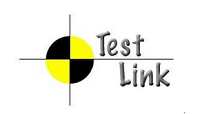Description

Kualitee

TestLink
Comprehensive Overview: Kualitee vs TestLink
To provide a comprehensive overview of Kualitee and TestLink, it's essential to examine their primary functions, target markets, market position, and key differentiating factors.
Kualitee
a) Primary Functions and Target Markets
Kualitee is a cloud-based test management tool designed for software development teams. Its primary functions include:
- Test Case Management: Facilitates creating, organizing, and managing test cases.
- Defect Management: Provides tools for identifying, reporting, and tracking bugs.
- Project Management: Helps in managing multiple projects with structured documentation and reports.
- Integration Support: Seamless integration with popular tools like JIRA, Jenkins, and GitHub.
- Collaboration Features: Enhances team collaboration with features like role-based access control and dashboards.
Target Markets: Kualitee primarily targets small to medium-sized enterprises (SMEs) and agile development teams that require a robust testing lifecycle management solution without significant overhead.
b) Market Share and User Base
Kualitee is relatively newer compared to more established tools and thus has a smaller market share. It is growing, particularly in regions where cloud-based solutions are preferred due to their scalability and cost-effectiveness. It appeals to teams that prioritize ease of use and quick deployment.
TestLink
a) Primary Functions and Target Markets
TestLink is an open-source test management tool that provides a comprehensive suite of features including:
- Test Case Management: Enables the design, execution, and tracking of test cases.
- Requirements Management: Allows linking test cases to requirements to ensure coverage.
- Reports and Metrics: Offers detailed reporting and statistics for test runs.
- Integration Capabilities: Supports integration with bug tracking tools like Bugzilla and Mantis.
- Collaboration Features: Provides a platform for teams to collaborate through shared test plans and executions.
Target Markets: TestLink targets a wide range of users, from individual testers and freelancers to large development teams across various industries. Its open-source nature makes it appealing to organizations looking for a cost-effective solution.
b) Market Share and User Base
TestLink enjoys a significant presence, particularly in the open-source community. It has a large user base, including many educational institutions and developers who prefer customizable solutions without licensing costs. Its market share is stable but faces competition from commercial test management tools offering more out-of-the-box features.
Key Differentiating Factors
-
Deployment Model:
- Kualitee: Primarily cloud-based, offering ease of access and maintenance.
- TestLink: Open-source and typically deployed on-premises, giving users more control over modifications and customizations.
-
Ease of Use and Setup:
- Kualitee: Known for a user-friendly interface and straightforward setup, making it accessible to non-technical users.
- TestLink: Requires more technical expertise for installation and configuration but provides flexibility for customization.
-
Cost:
- Kualitee: Subscription-based model with recurring costs for cloud services.
- TestLink: Free of charge under an open-source license, suitable for organizations with budget constraints.
-
Feature Set and Integration:
- Kualitee: Offers a wide range of integrations with modern DevOps tools and emphasizes collaboration, which is crucial for agile teams.
- TestLink: Provides essential test management functions with robust customization options, but integration capabilities may require additional configuration.
-
Community and Support:
- Kualitee: Commercial product support, including customer service and regular updates.
- TestLink: Supported by a community of developers and users, which can be a valuable resource, but official support may be limited to community forums and documentation.
In conclusion, Kualitee and TestLink serve different niches within the test management space. Kualitee is a good fit for teams seeking a cloud-based, easy-to-use solution with strong integration capabilities, while TestLink is ideal for those who want a cost-effective, customizable tool with an open-source environment.
Contact Info

Year founded :
2018
+1 415-644-5060
Not Available
United States
http://www.linkedin.com/company/kualitee

Year founded :
Not Available
Not Available
Not Available
Italy
Not Available
Feature Similarity Breakdown: Kualitee, TestLink
Kualitee and TestLink are both test management tools that help organizations manage their software testing processes. Here's a breakdown of their features and comparisons:
a) Core Features in Common
-
Test Case Management: Both Kualitee and TestLink offer robust test case management, allowing users to create, organize, and manage test cases effectively.
-
Test Execution and Tracking: Both tools allow for the execution of test plans and tracking of results. This includes managing test runs, recording outcomes, and providing detailed test execution reports.
-
Requirements Management: Both platforms support linking test cases to requirements, ensuring traceability and coverage of all functional aspects of the software.
-
Defect Management: They offer defect tracking capabilities, allowing users to log, track, and manage defects found during testing.
-
Reporting and Metrics: Both tools provide reporting features to generate various test reports and metrics, aiding in the analysis and decision-making process.
-
Collaboration: They provide collaborative features that let multiple users work together in planning, executing, and tracking tests.
b) Comparison of User Interfaces
-
Kualitee: Kualitee's user interface is often described as modern and intuitive, with a focus on ease of navigation and user-friendliness. It presents information in a visually appealing manner, using dashboards and visual metrics to enhance user experience.
-
TestLink: TestLink's user interface is more utilitarian and functional, which can be less visually appealing compared to Kualitee. It offers a straightforward and no-nonsense approach, which some users may find less intuitive than other modern UIs but is valued for its efficiency and directness.
c) Unique Features
-
Kualitee:
- Integration with Project Management Tools: Kualitee offers deep integrations with tools like JIRA, Redmine, and GitHub, which can streamline project workflows.
- Customizable Dashboards: It allows users to create personalized dashboards tailored to specific project needs.
- Mobile Version: Kualitee provides a mobile version for on-the-go access and operation.
-
TestLink:
- Open Source Flexibility: TestLink is open-source, which allows for customization and flexibility in deployment. This is beneficial for teams looking to tailor the tool to specific requirements without additional licensing costs.
- Comprehensive Testing Configuration: It offers advanced configurations for test plans and builds, providing detailed control over test environments and execution variables.
- Extensive Community Support: Being open-source, it has a robust community of users and developers who contribute to its ongoing enhancement and support.
Both tools are effective in managing testing processes, and the choice between them would largely depend on specific organizational needs, budget constraints, and user preference for interface design and feature set.
Features

Test Automation
Test Management
Defect Management
Integrations

Test Case Management
Reporting and Metrics
Requirements and Specifications
Integration and Collaboration
Best Fit Use Cases: Kualitee, TestLink
When evaluating test management tools like Kualitee and TestLink, it’s important to understand their strengths and optimal use cases, along with how they cater to different industry verticals or company sizes.
Kualitee
a) Best Fit Use Cases for Kualitee:
-
Businesses or Projects:
- Small to Medium Enterprises (SMEs): Kualitee is particularly beneficial for small to medium-sized businesses where ease of use and setup speed are critical. Its intuitive interface reduces the learning curve, making it accessible even for teams without a dedicated QA department.
- Agile and DevOps Teams: Given its strong integration capabilities with popular tools like JIRA, Jenkins, and GitHub, Kualitee is well-suited for Agile and DevOps environments where continuous integration and delivery are core requirements.
- Projects Requiring Collaboration: Kualitee’s emphasis on collaboration tools makes it a great choice for projects that involve cross-functional teams needing seamless communication and information sharing.
-
Industry Verticals:
- Software Development: Particularly startups and tech companies needing a robust yet straightforward tool for managing their testing activities.
- Healthcare and Financial Services: Industries needing compliance features can benefit from Kualitee's reporting and traceability functions.
-
Company Sizes:
- Small to Mid-sized Companies: Kualitee scales well with companies that need comprehensive test management without the overhead of more complex systems. Its pricing structure is often favorable for smaller budgets.
TestLink
b) Best Fit Use Cases for TestLink:
-
Businesses or Projects:
- Large Enterprises or Complex Projects: TestLink’s open-source nature makes it highly customizable, ideal for large enterprises that require tailored solutions to manage complex testing environments.
- Budget-Conscious Teams: Organizations looking to minimize costs might prefer TestLink, as it is a free tool, although it does require technical expertise for setup and maintenance.
- Projects Focused on Manual Testing: TestLink excels in environments where manual testing is prominent, providing detailed tracking and reporting features suited to such processes.
-
Industry Verticals:
- Government and Education: Institutions often taking advantage of open-source solutions for budgetary reasons may find TestLink appealing.
- Insurance and Manufacturing: Industries with extensive, detailed testing requirements would benefit from TestLink’s robust test case management capabilities.
-
Company Sizes:
- Large Companies: TestLink is more appropriate for larger companies with IT teams capable of handling its customization and potential intricacies.
d) Catering to Different Industry Verticals or Company Sizes:
-
Kualitee caters more to those who need an efficient, integrated solution with minimal setup, suitable for various industry verticals demanding rapid deployment and collaboration. Its flexibility and scaling options serve SMEs well.
-
TestLink, being open-source, appeals to industries or companies where customization is key, especially if they have the necessary resources to leverage its full potential. This suits larger organizations or enterprises needing deep integration and reporting capabilities.
In summary, Kualitee is best for smaller, agile companies needing ease of use and integration, while TestLink is ideal for larger, budget-conscious organizations requiring high customization and robust manual testing support.
Pricing

Pricing Not Available

Pricing Not Available
Metrics History
Metrics History
Comparing teamSize across companies
Conclusion & Final Verdict: Kualitee vs TestLink
When comparing Kualitee and TestLink, a comprehensive analysis should consider various factors including functionality, user experience, integration capabilities, pricing, and support. Here is a conclusion and final verdict for both products:
a) Best Overall Value
Kualitee tends to offer the best overall value for organizations that prioritize modern user interfaces, strong integration capabilities, and user-friendly experience. It is suitable for various team sizes and is equipped with robust management features that streamline testing workflows.
TestLink, on the other hand, is best suited for organizations with a focus on value from a cost perspective, especially if they are willing to invest in customization and don't require a contemporary interface. TestLink’s open-source nature provides flexibility for customization but may require more technical expertise.
b) Pros and Cons of Each Product
Kualitee:
-
Pros:
- User-friendly interface and modern design
- Strong integration features with popular tools like JIRA, Jenkins, GitHub, and Slack.
- Offers comprehensive test management features and real-time reporting.
- Cloud-based solution ensures accessibility and ease of deployment.
-
Cons:
- May be more expensive than open-source alternatives.
- Some users might find limited customization options compared to more flexible platforms.
TestLink:
- Pros:
- Highly customizable and open-source, offering flexibility and cost efficiency.
- Suitable for teams with technical expertise who can modify the tool to fit specific workflows.
- Good for projects that require simple test management without additional overhead costs.
- Cons:
- Outdated user interface, which can affect usability and learning curve.
- Requires technical expertise for setup and customization, which may lead to higher upfront time investment.
- Limited integration capabilities compared to more modern solutions.
c) Recommendations for Users Deciding Between Kualitee vs TestLink
-
Consider Team Experience and Capacity:
- If your team has technical resources that can leverage open-source software and you need a cost-effective solution, TestLink could be the right choice.
- If you prioritize ease of use and have limited technical resources, consider Kualitee for its intuitive interface and support.
-
Integration Needs:
- Choose Kualitee if your testing processes heavily rely on integration with other software development tools.
- TestLink, though limited in native integrations, can be modified for certain integrations if your team has development expertise.
-
Budget Considerations:
- If budget is a key factor and your team can manage the technical demands, TestLink is advantageous.
- For a bit more financial flexibility, Kualitee provides a smoother experience with less need for internal IT support.
In summary, for modern, out-of-the-box functionality and quick setup, Kualitee is a strong contender, while TestLink is a valuable choice for those who prioritize economic value and customization potential. Users should assess their team's capacity, specific needs, and budget to make a well-informed decision.
Add to compare
Add similar companies



